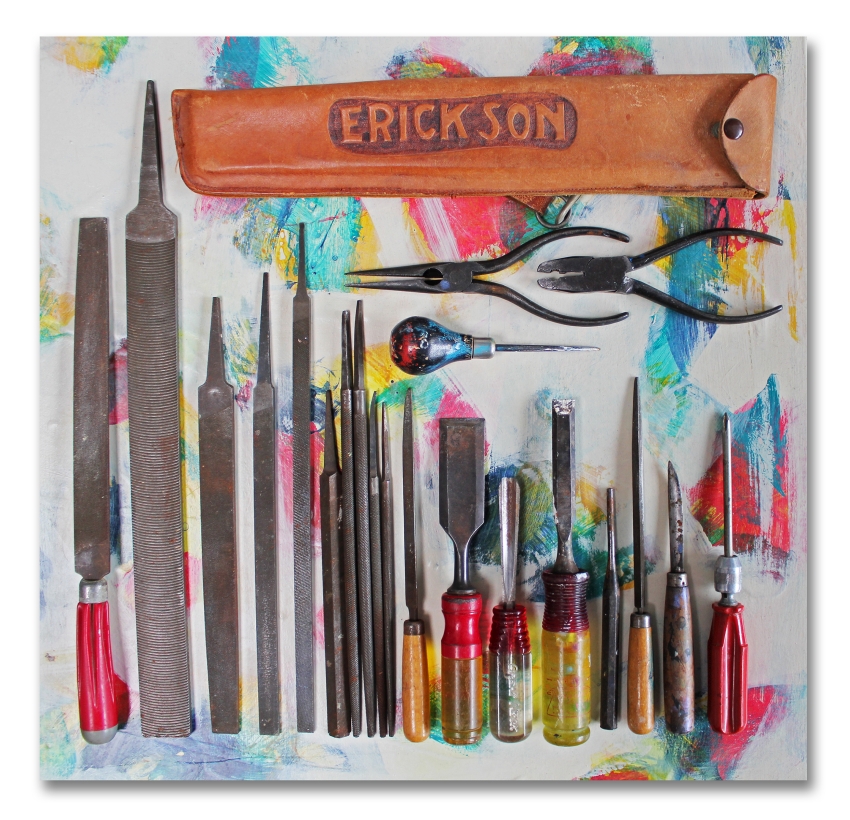Here are five photographs displaying a vast collection of my grandfather, Frank
Severin, and my father, Ernest Anders Erickson's tools and knives, that they used
in their work shops. The tools date back to the early 1900s, and span the 20th Century,
up to when my dad passed in 2013.
Hammers, screwdrivers, hand-saws, chisels, planers, files, pliers, scissors, putty knives,
gauges, levels, squares: Tools of their trades.
I often use many of these tools at the studio. Some are my favorites, and ones I go to first.
Their family history means a lot to me, and in that, using them in my work I feel continues
Frank and my father's love of craftsmanship. I enjoy aged and worn things and these fit into
that quite well.
My grandfather's Frank G.S. Erickson's knife collection is well represented. One is from 1910
and he carried that during his time in the American Expeditionary Force in 1918-1919. Another is
a handmade knife from 1944 & one from 1965. Frank lived a major portion of his life in Regan,
Riverdale and Bismarck, North Dakota. Some of these knives come from his time out west between
1910 and 1918.
One specific knife he carried during his time as a Railroad Deputy out of La Grande,
Oregon, has always been a favorite of mine. His participation in the famed 'Lost Battalion,'
came soon after his Cowboy days along the Pacific.
In the early period of October of 1918
during the Meuse Argonne Offensive, Frank and the 77th Division were trapped behind
German lines for a week. It was an intense period for every man involved, and casualties were
very high. They ran out of food and water by the 4th day and survived on their wits and good
leadership by Major Charles Whittlesey and the handful of his Infantry leaders. In time, Frank
and the rest of the men that walked out of 'The Pocket' of the Argonne, would forever be known
as fortunate survivors of one of the worst battle calamities of the US involvement in the War.
Frank's Hunting & Fishing Knives from the 1920s through 1970s can be viewed.
He used many of them for skinning animals, taking their hides, to clean and fillet fish.
Following his return in 1919 from France, Frank lived the rest of his life in North Dakota.
He was a real deal cowboy outdoors-man and loved to hunt and fish throughout Dakota.
Also in the photographs is an unusual bag of marbles. Frank and Ernest Anders told their stories to
me when I asked: The marbles began being used during the Revolutionary War. They were carried by
soldiers for their amusement during their idle times and games they played. Often they were lost in
Revolutionary War camps. Similar experiences can be found during the Civil War and most interestingly
hundreds were located at Indian village excavations.
The marbles are clay fired and some are glazed. There is one in the group that I added and is called the
'Blood Eyeball Aggy' (Agate) that my father, Ernest Anders, kept from his childhood in the 1920s
and 1930s in Dakota. It was from the time when he played Marbles as a boy.
On the lower right is Frank's and Ernest's duck call from the 1930s.




